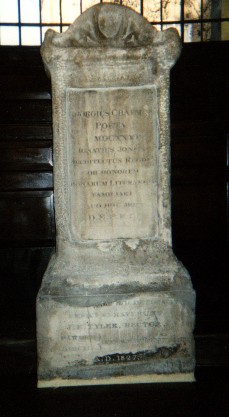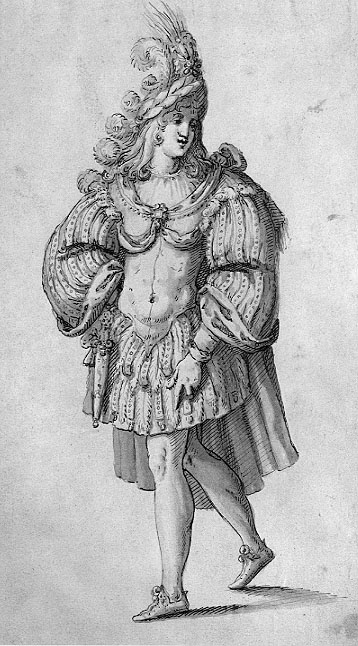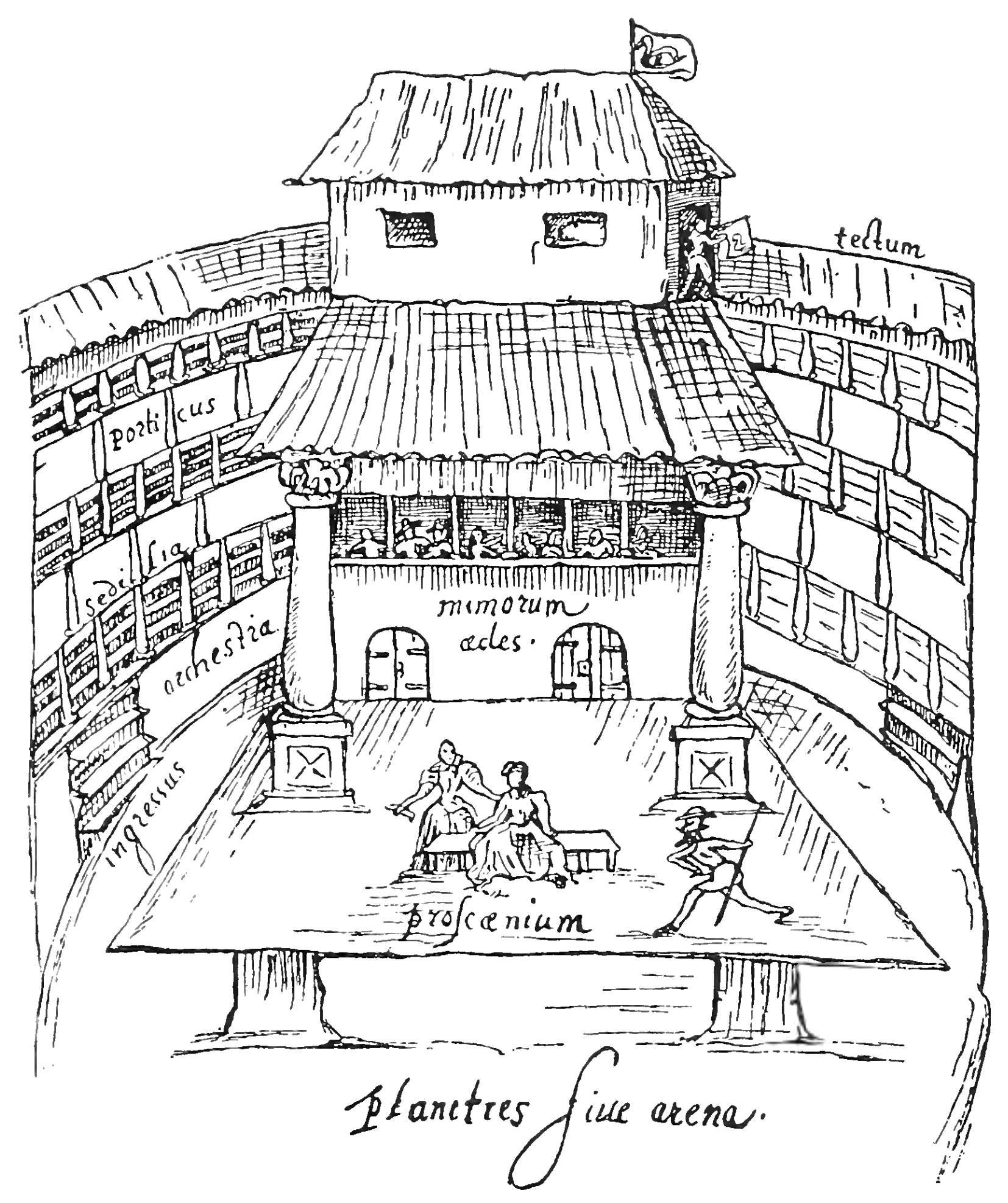|
May Day (play)
''May Day'' is an early 17th-century stage play, a comedy written by George Chapman that was first published in 1611. ''May Day'' enters the historical record when it was printed in a quarto edition by the stationer John Browne. This was the sole edition of the play prior to the 19th century. The title page of the 1611 quarto identifies Chapman as the author, and states that the play was acted at the Blackfriars Theatre, meaning it was performed by the Children of the Blackfriars, the troupe of boy actors that staged most of Chapman's early comedies. Date The date of the play's authorship and stage premier is a matter of dispute among scholars. The play's text shows a number of references, allusions, and borrowings from dramas current around the turn of the century, like John Marston's ''Antonio's Revenge'' (1600); the play's parodies of passages in ''Hamlet'', including the famous soliloquy, have been widely noted by commentators. So, some critics have agreed with Chapman sc ... [...More Info...] [...Related Items...] OR: [Wikipedia] [Google] [Baidu] |
George Chapman
George Chapman (Hitchin, Hertfordshire, – London, 12 May 1634) was an English dramatist, translator and poet. He was a classical scholar whose work shows the influence of Stoicism. Chapman has been speculated to be the Rival Poet of Shakespeare's sonnets by William Minto, and as an anticipator of the metaphysical poets of the 17th century. Chapman is best remembered for his translations of Homer's '' Iliad'' and '' Odyssey'', and the Homeric '' Batrachomyomachia''. Life and work Chapman was born at Hitchin in Hertfordshire. There is conjecture that he studied at Oxford but did not take a degree, though no reliable evidence affirms this. Very little is known about Chapman's early life, but Mark Eccles uncovered records that reveal much about Chapman's difficulties and expectations. In 1585 Chapman was approached in a friendly fashion by John Wolfall Sr., who offered to supply a bond of surety for a loan to furnish Chapman money "for his proper use in Attendance upon ... [...More Info...] [...Related Items...] OR: [Wikipedia] [Google] [Baidu] |
Alessandro Piccolomini
Alessandro Piccolomini (13 June 1508 – 12 March 1579) was an Italian humanist, astronomer and philosopher from Siena, who promoted the popularization in the vernacular of Latin and Greek scientific and philosophical treatises. His early works include ''Il Dialogo della bella creanza delle donne, o Raffaella'' (1539) and the comedies ''Amor costante'', and ''Alessandro'', (other titles are erroneously attributed to him) which were sponsored and produced by the Sienese Accademia degli Intronati, of which he was a member and an official. Much of his literary production consisted of translations from the Classics, of which Book XIII of Ovid's Metamorphoses and book VI of the Aeneid are early examples. In 1540, while a student at the University of Padua, he helped found the Infiammati Academy, in which he gave lectures in philosophy. (He never taught at the University of Padua, as is often stated incorrectly.) His poetry, in which he followed the Petrarchan tradition, appeared first ... [...More Info...] [...Related Items...] OR: [Wikipedia] [Google] [Baidu] |
Plays By George Chapman
Play most commonly refers to: * Play (activity), an activity done for enjoyment * Play (theatre), a work of drama Play may refer also to: Computers and technology * Google Play, a digital content service * Play Framework, a Java framework * Play Mobile, a Polish internet provider * Xperia Play, an Android phone * Rakuten.co.uk (formerly Play.com), an online retailer * Backlash (engineering), or ''play'', non-reversible part of movement * Petroleum play, oil fields with same geological circumstances * Play symbol, in media control devices Film * ''Play'' (2005 film), Chilean film directed by Alicia Scherson * ''Play'', a 2009 short film directed by David Kaplan * ''Play'' (2011 film), a Swedish film directed by Ruben Östlund * ''Rush'' (2012 film), an Indian film earlier titled ''Play'' and also known as ''Raftaar 24 x 7'' * ''The Play'' (film), a 2013 Bengali film Literature and publications * ''Play'' (play), written by Samuel Beckett * ''Play'' (''The New York Time ... [...More Info...] [...Related Items...] OR: [Wikipedia] [Google] [Baidu] |
Sicily
(man) it, Siciliana (woman) , population_note = , population_blank1_title = , population_blank1 = , demographics_type1 = Ethnicity , demographics1_footnotes = , demographics1_title1 = Sicilian , demographics1_info1 = 98% , demographics1_title2 = , demographics1_info2 = , demographics1_title3 = , demographics1_info3 = , timezone1 = CET , utc_offset1 = +1 , timezone1_DST = CEST , utc_offset1_DST = +2 , postal_code_type = , postal_code = , area_code_type = ISO 3166 code , area_code = IT-82 , blank_name_sec1 = GDP (nominal) , blank_info_sec1 = €89.2 billion (2018) , blank1_name_sec1 = GDP per capita , blank1_info_sec1 ... [...More Info...] [...Related Items...] OR: [Wikipedia] [Google] [Baidu] |
Masque
The masque was a form of festive courtly entertainment that flourished in 16th- and early 17th-century Europe, though it was developed earlier in Italy, in forms including the intermedio (a public version of the masque was the pageant). A masque involved music, dancing, singing and acting, within an elaborate stage design, in which the architectural framing and costumes might be designed by a renowned architect, to present a deferential allegory flattering to the patron. Professional actors and musicians were hired for the speaking and singing parts. Masquers who did not speak or sing were often courtiers: the English queen Anne of Denmark frequently danced with her ladies in masques between 1603 and 1611, and Henry VIII and Charles I of England performed in the masques at their courts. In the tradition of masque, Louis XIV of France danced in ballets at Versailles with music by Jean-Baptiste Lully. Development The masque tradition developed from the elaborate pageants and co ... [...More Info...] [...Related Items...] OR: [Wikipedia] [Google] [Baidu] |
Chimney Sweep
A chimney sweep is a person who clears soot and creosote from chimneys. The chimney uses the pressure difference caused by a hot column of gas to create a draught and draw air over the hot coals or wood enabling continued combustion. Chimneys may be straight or contain many changes of direction. During normal operation, a layer of creosote builds up on the inside of the chimney, restricting the flow. The creosote can also catch fire, setting the chimney (and potentially the entire building) alight. The chimney must be swept to remove the soot. In Great Britain, master sweeps took apprentices, typically workhouse or orphan boys, and trained them to climb chimneys. In the German States, master sweeps belonged to trade guilds and did not use climbing boys. In Italy, Belgium, and France climbing boys were used. The occupation requires some dexterity, and carries health risks. History The Tudors in England had established the risk of chimneys and an ordnance was created in 1 ... [...More Info...] [...Related Items...] OR: [Wikipedia] [Google] [Baidu] |
Padua
Padua ( ; it, Padova ; vec, Pàdova) is a city and ''comune'' in Veneto, northern Italy. Padua is on the river Bacchiglione, west of Venice. It is the capital of the province of Padua. It is also the economic and communications hub of the area. Padua's population is 214,000 (). The city is sometimes included, with Venice (Italian ''Venezia'') and Treviso, in the Padua-Treviso-Venice Metropolitan Area (PATREVE) which has a population of around 2,600,000. Padua stands on the Bacchiglione River, west of Venice and southeast of Vicenza. The Brenta River, which once ran through the city, still touches the northern districts. Its agricultural setting is the Venetian Plain (''Pianura Veneta''). To the city's south west lies the Euganaean Hills, praised by Lucan and Martial, Petrarch, Ugo Foscolo, and Shelley. Padua appears twice in the UNESCO World Heritage List: for its Botanical Garden, the most ancient of the world, and the 14th-century Frescoes, situated in d ... [...More Info...] [...Related Items...] OR: [Wikipedia] [Google] [Baidu] |
Miles Gloriosus
''Alazṓn'' ( grc, ἀλαζών) is one of three stock characters in comedy of the theatre of ancient Greece. He is the opponent of the '' eirôn''. The ''alazṓn'' is an impostor that sees himself as greater than he actually is. The ''senex iratus'' (the angry father) and the ''miles gloriosus'' (the braggart soldier) are two types of ''alazṓn''. ''Miles Gloriosus'' ''Miles Gloriosus'' (literally, "braggart-soldier", in Latin) is a stock character of a boastful soldier from the comic theatre of ancient Rome, and variations on this character have appeared in drama and fiction ever since.Frye, Northrop. 1957. ''Anatomy of Criticism: Four Essays''. London: Penguin, 1990. . The character derives from the ''alazṓn'' or "braggart" of the Greek Old Comedy (e.g. Aristophanes). The term "Miles Gloriosus" is occasionally applied in a contemporary context to refer to a posturing and self-deceiving boaster or bully. Literary instances In the play '' Miles Gloriosus'' ("Boast ... [...More Info...] [...Related Items...] OR: [Wikipedia] [Google] [Baidu] |
Senex Amans
A ''senex amans'' (from Latin: "aged lover", "amorous old man") is a stock character of classical Greek and Roman comedy, medieval literature (e.g., fabliau) and drama. It is an old jealous man married to a young woman and thus often an object of mockery. He is variously ugly, impotent, puritanical, and foolish to be cuckolded by a young and handsome man. Often the term ''senex amans'' is applied to the very motif involving the three. The classic example of a ''senex amans'' is Januarie (January) in the " Merchant's Tale" (part of the ''Canterbury Tales''). He is 60 years old (which given the life expectancy was a very advanced age) and he marries a young girl (under 18) named May, who later cuckolds him by entering into a secret relationship with January's squire, Damyan (Damian). The ''senex amans'' is not always a one-dimensional figure presented for derision. The morality within the tale itself is somewhat ambiguous, with the corrosive irony directed at January coupled with ... [...More Info...] [...Related Items...] OR: [Wikipedia] [Google] [Baidu] |
Lincoln's Inn Fields
Lincoln's Inn Fields is the List of city squares by size, largest public square in London. It was laid out in the 1630s under the initiative of the speculative builder and contractor William Newton, "the first in a long series of entrepreneurs who took a hand in developing London", as Sir Nikolaus Pevsner observes. The original plan for "laying out and planting" these fields, drawn by the hand of Inigo Jones, was said still to be seen in Lord Pembroke's collection at Wilton House in the 19th century, but its location is now unknown. The grounds, which had remained private property, were acquired by London County Council in 1895 and opened to the public by its chairman, Sir John Hutton, the same year. The square is today managed by the London Borough of Camden and forms part of the southern boundary of that borough with the City of Westminster. Lincoln's Inn Fields takes its name from the adjacent Lincoln's Inn, of which the private gardens are separated from the Fields by a ... [...More Info...] [...Related Items...] OR: [Wikipedia] [Google] [Baidu] |
English Renaissance Theatre
English Renaissance theatre, also known as Renaissance English theatre and Elizabethan theatre, refers to the theatre of England between 1558 and 1642. This is the style of the plays of William Shakespeare, Christopher Marlowe and Ben Jonson. Background The term ''English Renaissance theatre'' encompasses the period between 1562—following a performance of ''Gorboduc'', the first English play using blank verse, at the Inner Temple during the Christmas season of 1561—and the ban on theatrical plays enacted by the English Parliament in 1642. In a strict sense "Elizabethan" only refers to the period of Queen Elizabeth's reign (1558–1603). ''English Renaissance theatre'' may be said to encompass ''Elizabethan theatre'' from 1562 to 1603, '' Jacobean theatre'' from 1603 to 1625, and ''Caroline theatre'' from 1625 to 1642. Along with the economics of the profession, the character of the drama changed towards the end of the period. Under Elizabeth, the drama was a unified ... [...More Info...] [...Related Items...] OR: [Wikipedia] [Google] [Baidu] |
Venice
Venice ( ; it, Venezia ; vec, Venesia or ) is a city in northeastern Italy and the capital of the Veneto region. It is built on a group of 118 small islands that are separated by canals and linked by over 400 bridges. The islands are in the shallow Venetian Lagoon, an enclosed bay lying between the mouths of the Po and the Piave rivers (more exactly between the Brenta and the Sile). In 2020, around 258,685 people resided in greater Venice or the ''Comune di Venezia'', of whom around 55,000 live in the historical island city of Venice (''centro storico'') and the rest on the mainland (''terraferma''). Together with the cities of Padua and Treviso, Venice is included in the Padua-Treviso-Venice Metropolitan Area (PATREVE), which is considered a statistical metropolitan area, with a total population of 2.6 million. The name is derived from the ancient Veneti people who inhabited the region by the 10th century BC. The city was historica ... [...More Info...] [...Related Items...] OR: [Wikipedia] [Google] [Baidu] |




_(6985293553).jpg)


.jpg)